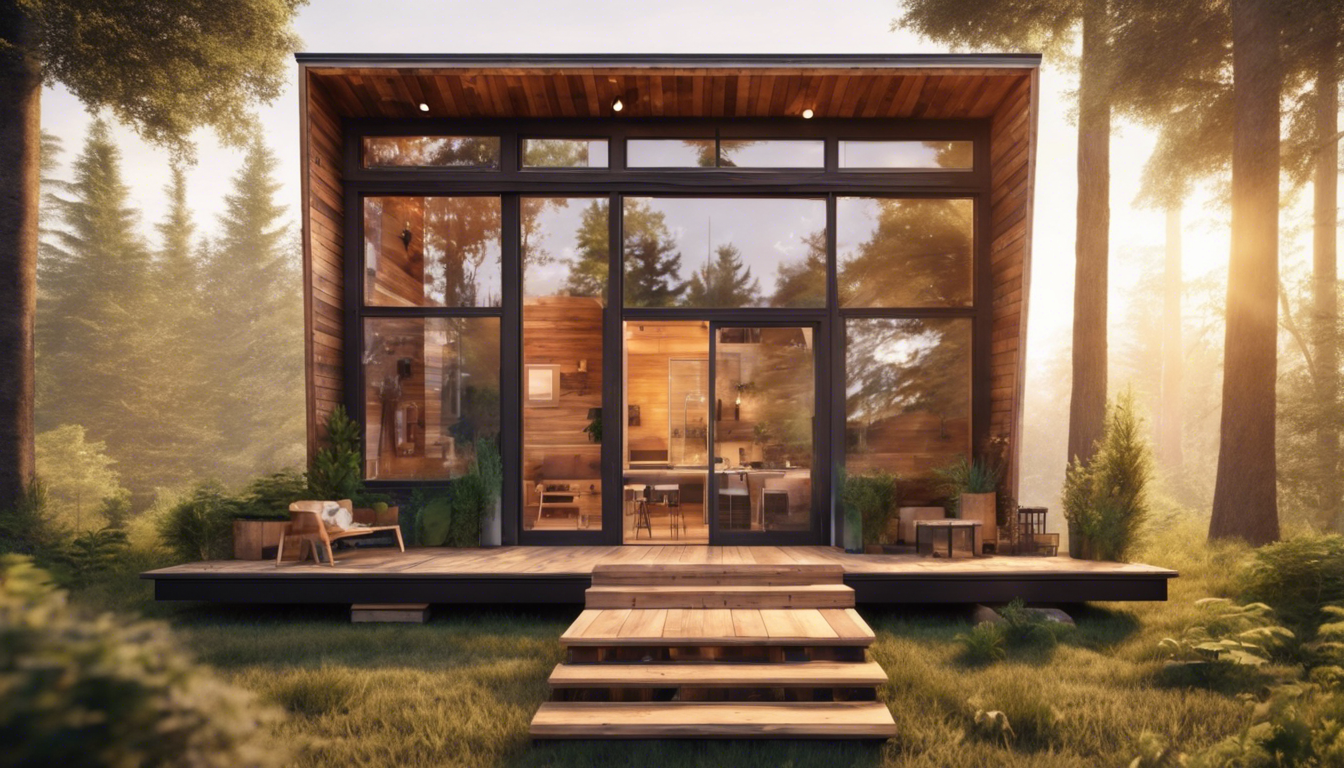Tiny home communities offer a unique option for sustainable living.
These communities consist of small homes that focus on eco-friendly principles, simplicity, and a sense of community.
In this guide, we will explore what tiny home communities are, their benefits, how to design sustainable tiny homes, tips for finding the right community, and the challenges you might face.
If you are interested in a minimalist lifestyle and want to live more sustainably, this guide will help you understand tiny home communities better.
The Most Popular Modular/Tiny Home On Amazon
Key Takeaways
- Tiny home communities offer a unique and sustainable living experience.
- Living in a tiny home community fosters a strong sense of community and collaboration.
- The design of sustainable tiny homes focuses on eco-friendly materials and efficient use of space.
- Researching various tiny home communities is essential to find the right fit for your lifestyle.
- While tiny home living has numerous advantages, it also presents specific challenges that must be carefully considered.
Understanding Tiny Home Communities
A tiny home community consists of small houses built close together.
These homes often focus on sustainability and simplicity.
Residents typically share common spaces, such as gardens and recreational areas.
The communities promote a sense of belonging.
Many people choose these communities for affordability and reduced environmental impact.
Living in a tiny home community encourages a minimalist lifestyle.
Benefits of Living in a Tiny Home Community
Living in a tiny home community offers many benefits.
First, residents enjoy lower living costs.
Smaller homes mean reduced utility bills and maintenance expenses.
Second, these communities often promote a strong sense of connection.
Neighbors support each other, creating friendships and a sense of belonging.
Third, living in a tiny home community encourages minimalist lifestyles.
This helps individuals focus on experiences rather than possessions.
Finally, many tiny home communities are in scenic areas.
Residents can enjoy nature and outdoor activities easily.
‘The best way to predict the future is to create it.’ – Peter Drucker
The Most Popular Modular/Tiny Home On Amazon
Designing Sustainable Tiny Homes
Designing sustainable tiny homes benefits both the environment and the community.
Tiny home communities promote efficient use of space and resources.
They reduce waste and energy consumption through smart design.
Each tiny home can include energy-efficient appliances, solar panels, and rainwater collection systems.
Residents can share communal resources, creating a sense of togetherness.
This setup fosters a lifestyle that values simplicity and sustainability.
Tiny home communities provide affordable housing options while supporting eco-friendly practices.
Finding the Right Tiny Home Community for You
To find the right tiny home community, start by listing your needs.
Consider location, amenities, and community rules.
Visit different sites to see the homes and meet residents.
Check if the community supports your lifestyle choices.
Research local services like shops and healthcare.
Discuss costs, including rent and utilities, with community managers.
Make sure the community aligns with your values and goals.
This process will help you choose a suitable tiny home community.
Challenges and Considerations of Tiny Home Living
Tiny home living offers unique challenges and considerations.
Limited space can lead to storage issues for belongings.
Residents may find it difficult to adapt to smaller living areas.
Community rules can restrict personal modifications.
Access to utilities may vary in tiny home communities.
Social interactions can also change when living in close proximity to neighbors.
Understanding these aspects is essential before moving into a tiny home community.
Frequently Asked Questions
What defines a tiny home community?
A tiny home community is a group of small homes, typically ranging from 100 to 400 square feet, that are often built on a shared piece of land.
Residents generally embrace a minimalist lifestyle and share common spaces and amenities, promoting a sense of community.
What are the main benefits of living in a tiny home community?
Living in a tiny home community can offer numerous benefits including reduced living expenses, a smaller environmental footprint, a close-knit community, and a simplified lifestyle that emphasizes experiences over possessions.
How do I find the right tiny home community for my lifestyle?
To find the right tiny home community, consider factors such as location, community values, available amenities, zoning regulations, and the overall vibe of the community.
Visiting several communities and speaking with current residents can also help in your decision-making process.
What are the design considerations for sustainable tiny homes?
Sustainable tiny homes should focus on energy efficiency, use of eco-friendly materials, and innovative design solutions to maximize space and minimize waste.
Incorporating features like solar panels, composting toilets, and sustainable water management systems can enhance sustainability.
What are some challenges of living in a tiny home community?
Challenges of living in a tiny home community can include limited space, potential zoning and regulatory issues, the need for effective communication among residents, and adjusting to a smaller lifestyle.
It’s important to consider these factors before making the transition.





Leave a Reply